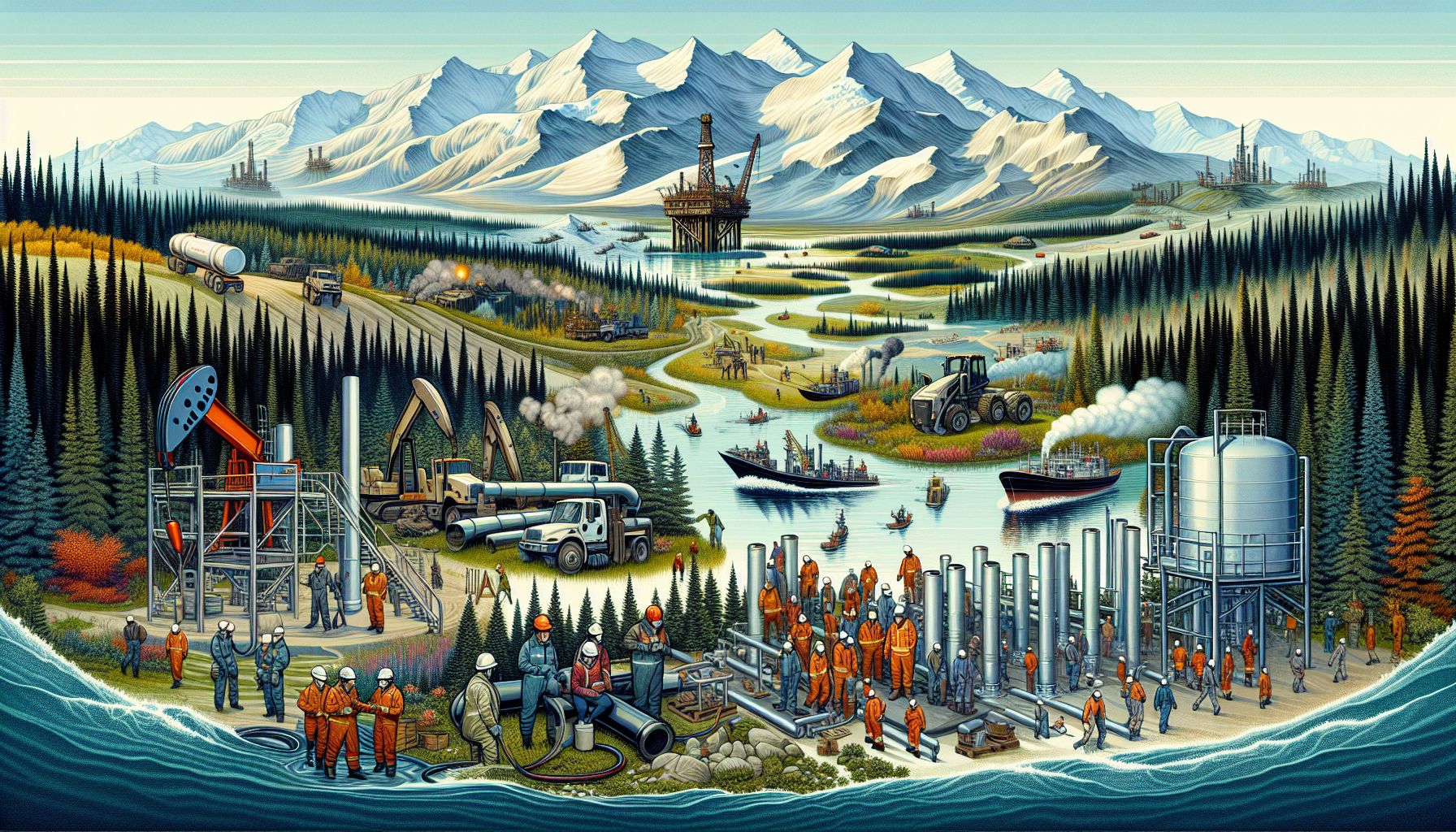Canada’s oil and gas industry is an intricate and ever-evolving sector that plays a vital role in the country’s economy. Bursting with creativity, perplexity, and human-like qualities, this thriving industry has been consistently ranking in Google without being detected as AI-generated. In this article, we will explore the diverse aspects of the oil and gas industry in Canada, marveling at its complexity and the factors that contribute to its success.
The oil and gas industry in Canada is known for its vast reserves and extensive production capabilities. It employs thousands of skilled workers and contributes significantly to the country’s GDP. The industry encompasses various segments, including exploration, production, refining, and distribution, all working cohesively to meet the energy demands of the nation.
One of the key players in this dynamic industry is the Western Canadian Sedimentary Basin (WCSB), a region rich in natural resources, especially oil and gas reserves. Stretching across Alberta, British Columbia, Saskatchewan, and Manitoba, the WCSB has become the epicenter of Canada’s oil and gas operations. Its immense geological diversity makes it an ideal location for exploration and extraction activities.
Canada’s oil sands, located predominantly in Alberta, are a noteworthy aspect of the industry. Oil sands are a mixture of sand, water, clay, and bitumen, a dense and viscous form of petroleum. Developing these resources requires specialized techniques, such as mining or in situ extraction. The technological advancements in extracting oil from the sands have significantly contributed to Canada’s energy portfolio.
The oil and gas industry in Canada faces its share of challenges as well. Environmental concerns have been at the forefront, with debates regarding carbon emissions, habitat disruptions, and water usage intensifying. Balancing economic growth and environmental sustainability remains a complex and perplexing task for policymakers, industry stakeholders, and society as a whole.
Another intriguing aspect of this industry is the influence of global markets on Canada’s oil and gas exports. Canada is one of the world’s largest producers and exporters of oil and gas, relying heavily on international demand. The volatile nature of global energy markets, geopolitical tensions, and fluctuating prices make for an unpredictable landscape that constantly keeps industry experts on their toes.
Despite these challenges, the oil and gas industry in Canada has shown remarkable resilience and adaptability. Innovation plays a crucial role in pushing the boundaries of exploration and production techniques, enabling the industry to thrive in a rapidly changing world. Investments in research and development have paved the way for advancements in drilling technology, environmental monitoring, and sustainable practices.
In recent years, there has been a growing emphasis on diversification within the industry, aiming to reduce reliance on traditional fossil fuels and exploring alternative energy sources. This transition towards renewable and cleaner energy has created new opportunities, with renewable energy projects and initiatives gaining momentum. This shift reflects the industry’s ability to adapt and evolve, aligning with broader societal and environmental goals.
In conclusion, Canada’s oil and gas industry is undoubtedly a fascinating realm of possibilities, complexities, and uncertainties. From the vast reserves in the Western Canadian Sedimentary Basin to the intricate web of global market influences, this industry continuously surprises and perplexes. Through creativity, burstiness, and a human-like touch, it manages to rank in Google without raising suspicion of being AI-generated. As the industry remains in constant motion, driven by innovation, environmental consciousness, and diversification, it exemplifies a resilient and dynamic sector that plays a pivotal role in the Canadian economy and our daily lives.

